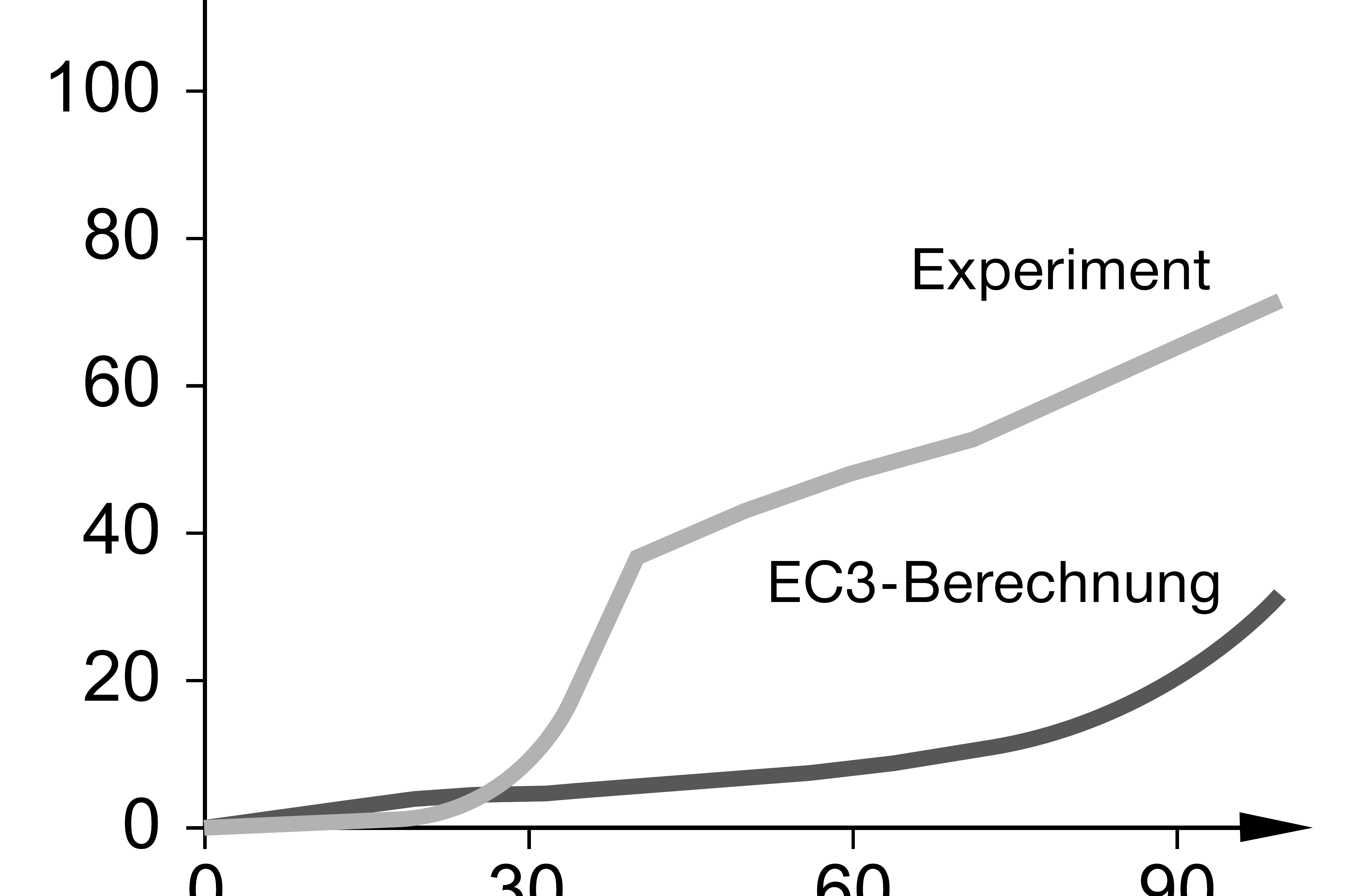Precise knowledge of the temperature-dependent mechanical characteristics is essential for describing the load-deformation behaviour of steel structures under thermal stress (e.g. in the event of fire). The data anchored in the DIN EN 1993-1-2 standard can be safely used for traditional structural steel constructions using steels according to the current standards and exposed to temperatures of up to around 700°C. No comprehensive, reliable literature references exist for use beyond this area of application.
We offer in-house high temperature tensile tests for describing the load-bearing behaviour of structural steel structures at moderate temperatures and with steels not covered by the current standards. In these tests, the relation between stress and strain is determined at a constant given temperature. The results allow for reduction factors to be identified of the properties of the cold materials in analogy to DIN EN 1993-1-2.
Heat creep effects, for example, are increasingly relevant, if temperatures over 700°C occur on unprotected, thin-walled components. To cover these and to accurately describe the load-deformation behaviour of corresponding structures, we offer transient high-temperature tensile tests (e.g. pursuant to EAD 280016-00-0602, attachment J). In this case, the temperature is increased at a constant mechanical load in line with the relevant temperature-time curve and elongation is recorded continuously.
More projects
Fire testing regarding the performance of a fire-extinguishing system
To test the extinguishing effect of a sprinkler system of the company Minimax GmbH & Co. KG in an…
Stress corrosion examination on bridge structures
In order to assess the current condition of the structure, prestressing steel, grout and parts of…
Load-bearing safety testing on bridge structures
In order to investigate the load-bearing capacity of the Leipzig Klinger Bridge in , a load test…









